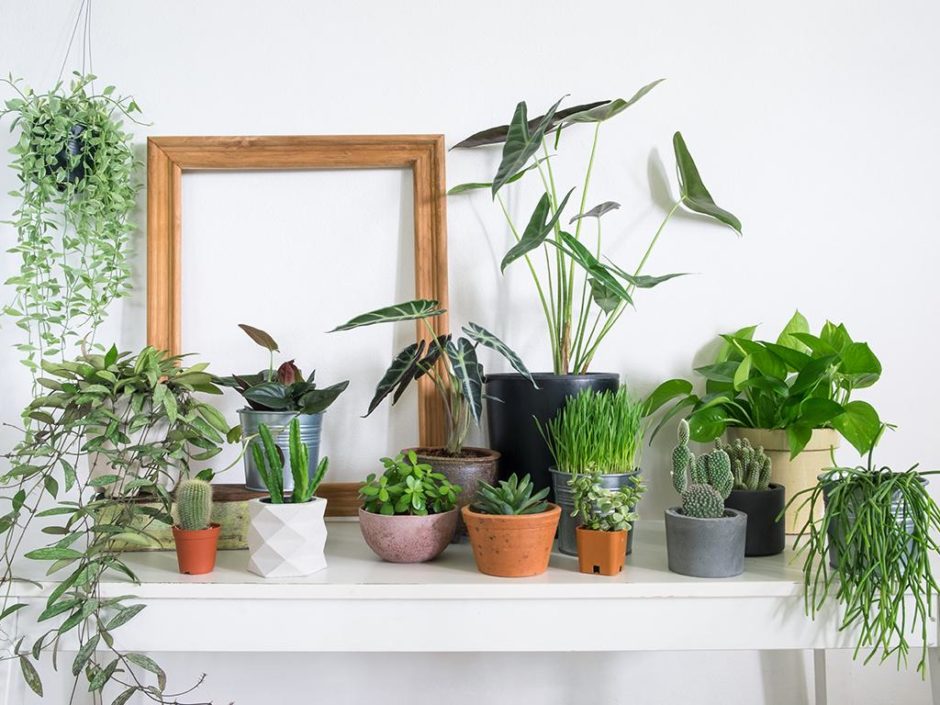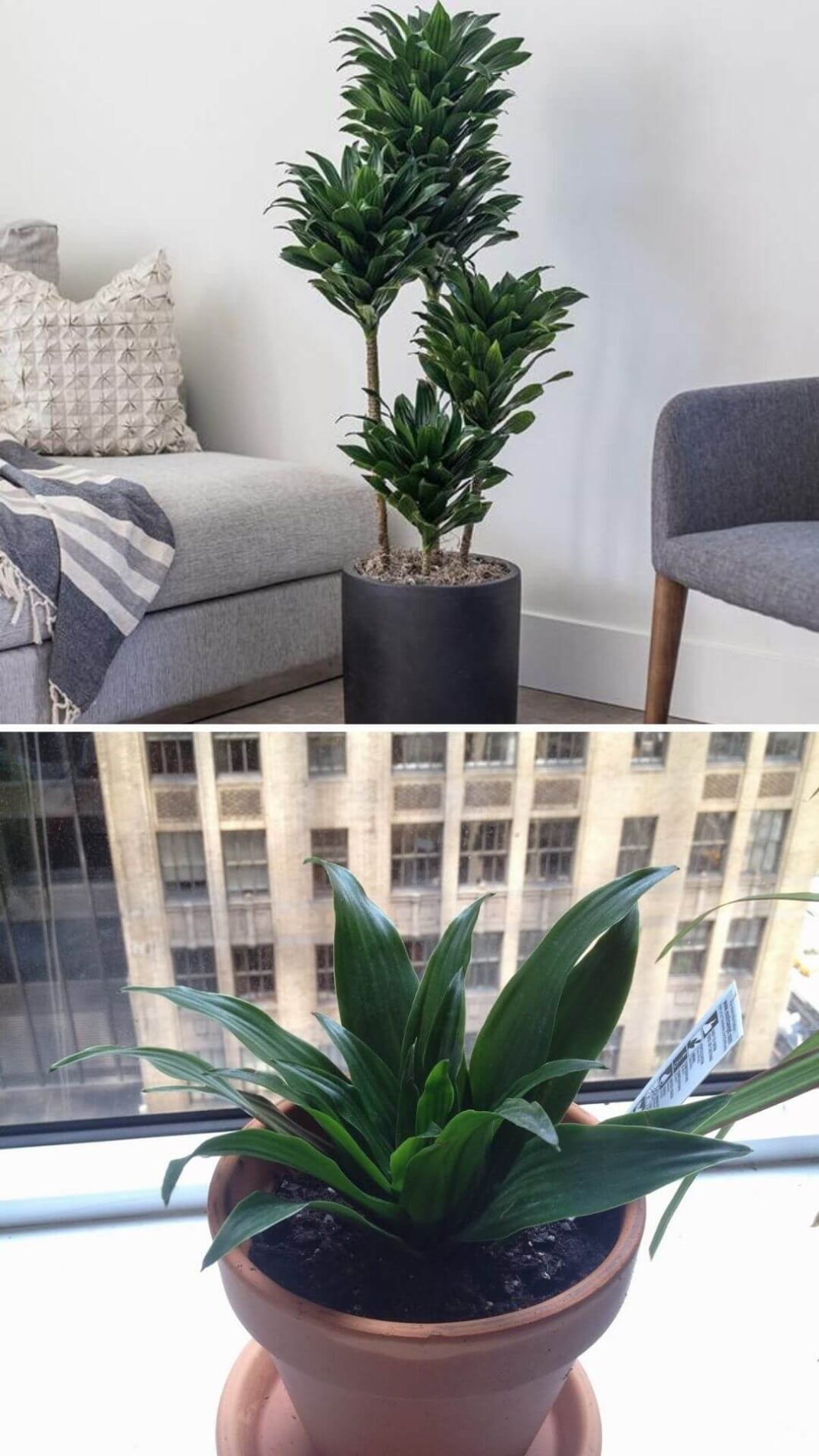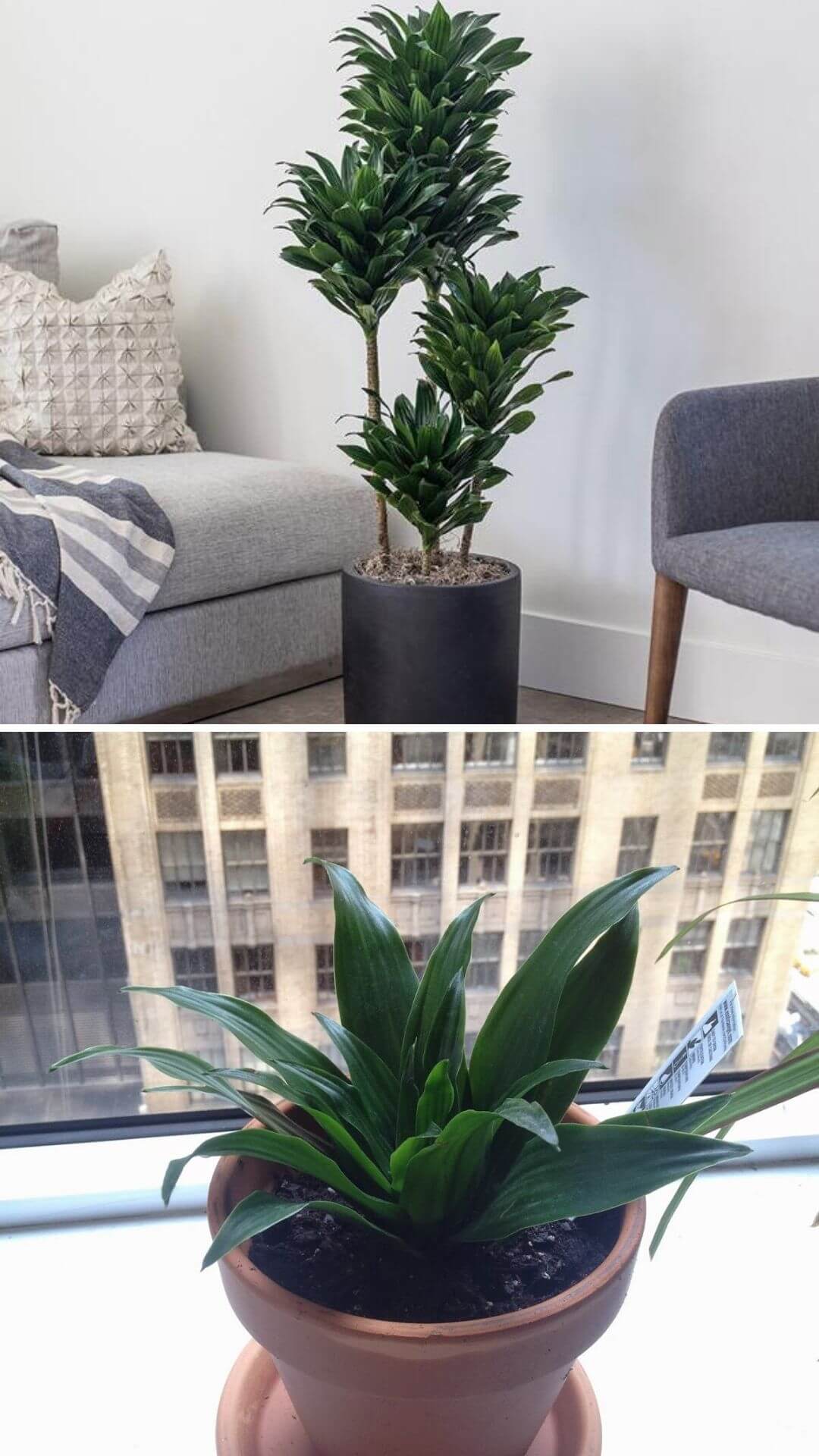The Power of Nature: Plants as Natural Air Purifiers
Transform your home into a healthier and more inviting space by harnessing the natural air-purifying abilities of houseplants. These green wonders not only add a touch of beauty and tranquility to your interior design but also actively work to improve indoor air quality. By incorporating houseplants that cleanse the air into your living space, you can enjoy the benefits of reduced allergens, improved respiratory health, and increased overall well-being. As air pollutants accumulate indoors, often at higher concentrations than outdoors, the need for effective air-purifying solutions becomes increasingly important. Houseplants offer a visually appealing and eco-friendly approach to maintaining a clean and healthy indoor environment.
Identifying the Most Effective Air-Cleaning Houseplants
The air-purifying abilities of houseplants have been the subject of extensive research, with the groundbreaking NASA Clean Air Study providing valuable insights into the most effective plants for combating indoor air pollutants. This study, conducted in 1989, investigated the potential for various common houseplants to remove harmful chemicals from the air, such as benzene, formaldehyde, trichloroethylene, xylene, and toluene. The results highlighted several top-performing plants, which have since become popular choices for those seeking to improve their indoor air quality.
Among the top-recommended houseplants from the NASA Clean Air Study are the snake plant (Sansevieria trifasciata), spider plant (Chlorophytum comosum), and peace lily (Spathiphyllum ‘Mauna Loa’). These plants are known for their exceptional air-purifying capabilities, efficiently removing a wide range of pollutants and releasing oxygen into the environment. By incorporating these and other highly-rated houseplants into your living space, you can effectively combat indoor air pollution and create a healthier home environment.
Say Goodbye to Pollutants: Our Top 5 Houseplant Picks
Transform your living space into a cleaner, healthier environment with our top five houseplant recommendations for purifying the air. These plants, backed by the NASA Clean Air Study, have been proven to effectively remove harmful pollutants and improve indoor air quality.
1. Snake Plant (Sansevieria trifasciata)
Also known as “Mother-in-Law’s Tongue,” the snake plant is a hardy, low-maintenance choice that thrives in various light conditions. This plant filters formaldehyde, benzene, trichloroethylene, and xylene, making it an excellent addition to any room in your home.

2. Spider Plant (Chlorophytum comosum)
The spider plant is a fast-growing, adaptable plant that excels at removing formaldehyde and xylene from the air. Its trailing foliage makes it an attractive choice for hanging baskets or shelves.

3. Peace Lily (Spathiphyllum ‘Mauna Loa’)
The peace lily is a elegant, flowering plant that effectively removes formaldehyde, benzene, trichloroethylene, xylene, and toluene from the air. It prefers low to medium light and requires minimal care, making it an excellent choice for beginners.

4. Golden Pothos (Epipremnum aureum)
The golden pothos is a versatile, easy-to-care-for plant that filters formaldehyde, benzene, trichloroethylene, xylene, and toluene. Its trailing vines make it an ideal candidate for hanging baskets or high shelves.

5. Dracaena ‘Janet Craig’ (Dracaena deremensis ‘Janet Craig’)
The ‘Janet Craig’ dracaena is a sturdy, low-maintenance plant that eliminates formaldehyde, benzene, trichloroethylene, and xylene from the air. Its glossy, dark green leaves add a touch of sophistication to any room.

By incorporating these top-performing houseplants into your home, you’ll be well on your way to enjoying the benefits of cleaner air and a healthier living environment.
How to Incorporate Air-Purifying Houseplants into Your Home
Transform your living space into a cleaner, healthier environment by carefully selecting, placing, and maintaining air-purifying houseplants. By considering factors such as light requirements, watering needs, and ideal plant placement, you can maximize the air-cleansing benefits of these natural air purifiers.
Selecting the Right Plants
When choosing houseplants that cleanse the air, consider the specific needs of each plant, as well as the environmental conditions of your home. Opt for a mix of plants with varying air-purifying properties to ensure comprehensive air cleansing. For example, the snake plant and spider plant are excellent at filtering formaldehyde, while the peace lily targets trichloroethylene and toluene.
Placement for Optimal Air Cleansing
Place air-purifying houseplants strategically throughout your home to maximize their impact. Consider factors such as light availability, humidity levels, and proximity to potential pollutant sources. For instance, position plants near windows, air vents, or areas with high foot traffic to ensure they have ample access to light and are well-positioned to filter the air.
Maintenance Tips for Healthy Plants
Proper care and maintenance are crucial for ensuring the long-term health and effectiveness of your air-purifying houseplants. Regularly water your plants according to their specific needs, provide proper light exposure, and fertilize them as recommended. Additionally, monitor for pests and address any issues promptly to maintain healthy plants and maximize their air-purifying benefits.
By following these practical tips, you can successfully incorporate air-purifying houseplants into your home and enjoy the benefits of cleaner air and a healthier living environment.
Caring for Your Indoor Garden: Essential Houseplant Maintenance Tips
Proper care and maintenance are essential for ensuring the long-term health and effectiveness of your air-purifying houseplants. By following these helpful tips, you can maintain healthy plants and maximize their air-purifying benefits.
Watering Frequency
Watering frequency depends on the specific needs of each plant, as well as the environmental conditions of your home. As a general rule, allow the soil to dry out slightly between waterings to prevent overwatering, which can lead to root rot and other issues. Be sure to monitor your plants regularly and adjust watering schedules as needed based on their individual requirements.
Proper Light Exposure
Light exposure plays a crucial role in the health and growth of your houseplants. While some plants thrive in bright, indirect light, others prefer low-light conditions. Research the light preferences of each plant and position them accordingly to ensure they receive the optimal amount of light for their specific needs.
Fertilization
Fertilizing your houseplants is essential for promoting healthy growth and maintaining their air-purifying abilities. Use a high-quality, balanced fertilizer and follow the manufacturer’s instructions for application rates and frequencies. Be cautious not to over-fertilize, as this can lead to excessive growth and reduced air-purifying benefits.
Pest Control
Pests can quickly compromise the health of your houseplants and reduce their air-purifying abilities. Monitor your plants regularly for signs of pests, such as discoloration, sticky residue, or tiny insects. If you detect pests, address the issue promptly using insecticidal soap or other recommended treatments. Regularly wiping down leaves with a damp cloth can also help prevent pest infestations.
By following these essential houseplant maintenance tips, you can maintain healthy, thriving houseplants that effectively cleanse the air and contribute to a cleaner, healthier living environment.
Additional Air-Purifying Houseplant Options: Expanding Your Collection
Beyond our top five houseplant picks, there are numerous other houseplants that cleanse the air, offering a variety of shapes, sizes, and care requirements. By exploring different plant varieties, you can create a unique and thriving indoor garden tailored to your personal style and preferences.
Rubber Tree (Ficus elastica)
The rubber tree is a popular indoor plant known for its large, glossy leaves and ability to filter formaldehyde from the air. This plant prefers bright, indirect light and should be watered thoroughly, allowing the soil to dry out between waterings. Rubber trees can grow quite large, making them an excellent choice for filling empty corners or creating a bold focal point in a room.
Bamboo Palm (Chamaedorea seifrizii)
The bamboo palm is a graceful, elegant plant that effectively removes formaldehyde, benzene, and trichloroethylene from the air. This plant thrives in bright, indirect light and requires consistent moisture, making it an ideal choice for humid environments. The bamboo palm’s slender, arching fronds create a delicate, airy appearance, perfect for adding a touch of softness to a room.
Azalea (Rhododendron simsii)
Azaleas are flowering shrubs that excel at removing formaldehyde from the air. These plants prefer cooler temperatures and high humidity, making them an excellent choice for bathrooms or other well-ventilated areas. Azaleas produce vibrant, showy flowers in shades of pink, red, white, and purple, adding a pop of color and visual interest to your indoor garden.
English Ivy (Hedera helix)
English ivy is a trailing, evergreen plant that effectively filters formaldehyde, benzene, and trichloroethylene from the air. This plant thrives in bright, indirect light and requires consistent moisture. English ivy is an ideal choice for hanging baskets or shelves, as its cascading vines can add texture and dimension to your indoor garden.
Red-Edged Dracaena (Dracaena marginata)
The red-edged dracaena is a striking, upright plant with slender, variegated leaves. This plant filters formaldehyde, xylene, and toluene from the air and prefers bright, indirect light. The red-edged dracaena is a low-maintenance plant that requires occasional watering and minimal care, making it an excellent choice for busy individuals or those new to houseplant ownership.
By incorporating these additional air-purifying houseplants into your home, you can expand your indoor garden and enjoy the benefits of cleaner air and a more inviting living environment.
Combating Indoor Air Pollution: A Multifaceted Approach
While houseplants that cleanse the air can significantly improve indoor air quality, it’s essential to employ a comprehensive approach to maintain clean and healthy air in your home. By combining houseplants with other air-purifying methods, you can create a more effective and holistic strategy for combating indoor air pollution.
Air Purifiers
Air purifiers are electronic devices designed to remove pollutants, allergens, and other harmful particles from the air. When used in conjunction with houseplants, air purifiers can provide an additional layer of protection against indoor air pollution. Select an air purifier with a HEPA filter, which is proven to capture and remove 99.97% of airborne particles as small as 0.3 microns.
Proper Ventilation
Proper ventilation is crucial for maintaining clean indoor air. Open windows and doors regularly to allow fresh air to circulate throughout your home. Additionally, consider installing exhaust fans in kitchens and bathrooms to help remove cooking fumes, moisture, and other airborne pollutants.
Regular Cleaning
Regular cleaning is another essential component of a comprehensive indoor air quality strategy. Vacuum carpets and upholstered furniture frequently to remove dust, allergens, and other particles. Dust surfaces and wash bedding regularly to minimize the accumulation of pollutants and allergens in your living space.
Monitoring Indoor Air Quality
Monitoring indoor air quality can help you identify potential issues and track the effectiveness of your air-purifying efforts. Consider investing in an indoor air quality monitor, which can detect and measure various pollutants, such as particulate matter, volatile organic compounds (VOCs), and humidity levels. By staying informed about your home’s air quality, you can make more informed decisions about how to maintain a clean and healthy living environment.
By combining houseplants with air purifiers, proper ventilation, regular cleaning, and monitoring, you can create a multifaceted approach to maintaining clean and healthy indoor air. This comprehensive strategy will not only help reduce allergens and improve respiratory health but also contribute to an overall sense of well-being in your home.
Green Spaces, Better Places: The Joy of Houseplants
Incorporating houseplants that cleanse the air into your living space offers a multitude of benefits beyond improved air quality. Houseplants not only contribute to a healthier environment but also bring life, color, and texture to your interior design. By embracing the world of houseplants, you can enjoy a more inviting, soothing, and aesthetically pleasing home.
Visual Appeal
Houseplants offer a wide variety of shapes, sizes, colors, and textures, making them an excellent addition to any room. From lush, green ferns to bold, structural succulents, there’s a houseplant to suit every style and preference. Strategically placed, houseplants can serve as focal points, create visual interest, and soften the edges of a space.
Mental Well-being
Studies have shown that interacting with nature and plants can have a positive impact on mental health, reducing stress, anxiety, and depression. By surrounding yourself with houseplants, you can create a calming, serene atmosphere that promotes relaxation and rejuvenation. Additionally, tending to houseplants can provide a sense of accomplishment and nurturing, further enhancing your overall well-being.
Biophilic Design
Biophilic design is an innovative concept that incorporates natural elements, such as plants, into architectural and interior spaces. By integrating houseplants into your living space, you’re not only improving air quality but also embracing a design philosophy that fosters a deeper connection with nature. This connection can lead to increased creativity, productivity, and overall satisfaction with your living environment.
By exploring the world of houseplants, you can enjoy the rewards of cleaner air, a more inviting home environment, and the numerous aesthetic and well-being benefits they provide. Embrace the power of nature and transform your living space into a green oasis that nurtures both your body and your soul.







